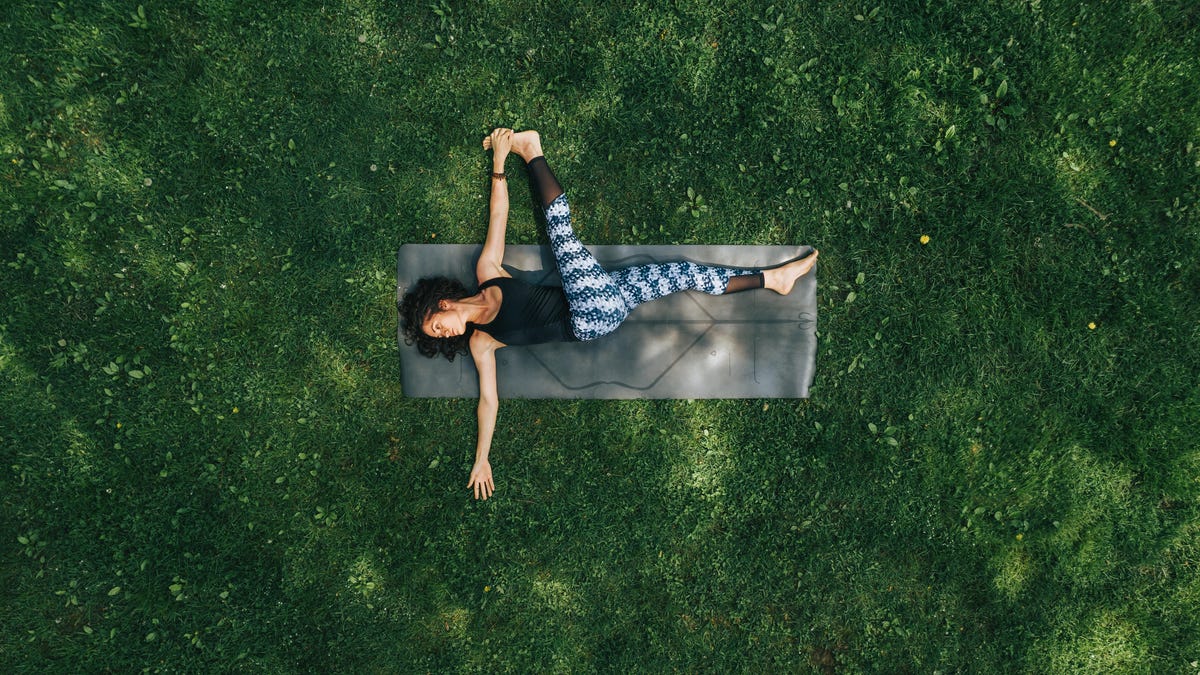3 benefits of stretching that rival working out
Stretching is great for your body -- plus it feels really good.

Let's be honest: Sometimes working out sucks: feeling sore, that burning pain that tells you an exercise is "working," dreading a tough workout in general -- it's not always a walk in the park. Given that exercise can be purposefully pain-inducing (remember "No pain, no gain?"), it's natural to want to steer clear of it all together.
Not that it's a good idea to not exercise (at least 150 minutes of moderate aerobic activity is recommended per week to stay healthy and prevent negative health outcomes), but you can definitely find ways to make the experience less painful or cringe-worthy. One exercise to consider? Stretching.
"Stretching helps loosen up tight muscles that have been stiff or underused (think: hours behind a desk or a night of sleep) or tight from repetitive motion (think: running, skiing, cycling or any one-directional movements)," says Vanessa Chu, founder of Stretch*d. "Stretching is a highly functional part of a well-rounded fitness routine. Dynamic stretching, like what we do at Stretch*d, is movement-based, so it can feel like a workout in itself. Active stretching promotes blood flow and helps flush out toxins or waste that builds up after a workout (what contributes to soreness)."
Below, Chu breaks down more of stretching's benefits and why it makes a great addition to your current routine.
Why stretching is good for you
Stretching offers plenty of benefits to those who exercise regularly -- and those who don't.
Helps you relax and release endorphins
"Stretching is also relaxing," says Chu. When you stretch and physically relax your muscles it can help activate your parasympathetic nervous system (aka the rest-and-digest state), according to Chu. "And [stretching] can also release endorphins, which is why it often feels good," she says.
Can help with joint pain
Dynamic stretching (stretches that are not moving rather than static) are low stress on your joints, according to Chu. "Stretching with controlled, repetitive movements can help relieve joint pain by loosening up the muscles around the joint. But remember that not all stretching is equal - some forms of stretching that are weight-bearing (like static or ballistic stretching) can put undue stress on a joint or ligament," she says.
Can counteract bad posture
"Stretching is a great, healthy form of activity as we age. It can help build mobility and flexibility and reduce stiffness," Chu says. And stretching isn't just an activity saved for post-exercise, it's also great to do after travel, or work, especially if you are sitting for a long time. "Stretching can help relieve tension in bodies that live a modern lifestyle -- staring at phones , sitting or driving for hours on end, picking up kids or heavy objects, and even just carrying stress in our neck, shoulders and backs all contribute to tightness."
How to start stretching at home
Stretching doesn't require special equipment, and you don't need a ton of time to get an effective stretch in either. "A 10- to 15- minute routine at the beginning or end of your day is a great habit to work in," says Chu. "A pre-bedtime routine helps promote a good night's sleep while stretching first thing in the morning works out the kinks from a long night of sleep. Stretching also activates the parasympathetic nervous system, and can help your body relax or ease into the day," says Chu.
Chu shares a 10 minute, full-body stretch to try below. "All stretches are done in active, repetitive movements and are designed to gently build flexibility with each repetition," she says.

